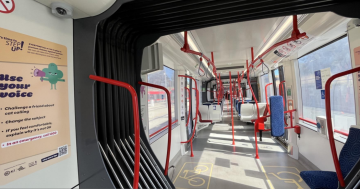
Making public spaces feel safer and more inclusive for everyone is one action in the latest ACT Women’s Plan. Photo: File.
Creating more inclusive and safe public spaces to increase participation of women and girls in the community is a key consideration in a plan to achieve gender equality in the ACT.
The Third Action Plan of the ACT Women’s Plan 2016-2026 has been released, focussing on five key areas: health and wellbeing; safety and inclusion; leadership and workforce participation; housing and homelessness; and appropriate and accessible services.
Women’s Health Matters ACT CEO Lauren Anthes said addressing each of these areas was imperative to improving outcomes for women and girls in the Territory.
“Women’s health and wellbeing depends on our ability to participate freely in public life, to move safely in community and family spaces, and to access services without discrimination, stigma, or barriers,” she said.
“As our recent survey of Women’s Health in the ACT shows, this is far from the case for all or even most women, but we can make improvements in each of these areas.”
Part of the plan includes starting a pilot of the ACT Government Gender Sensitive Urban Design Guidelines, released in July.
Submissions to the action plan stated there needed to be a dedicated commitment to social planning in the ACT to improve safety outcomes for the community.
“The inclusion of thoughtful social planning considering the needs of women and gender diverse people should inform decision-making around public transport, lighting, accessibility, space design etc,” the Australia Gender Equity’s submission stated.
The action plan noted when public spaces were designed according to inclusive values, they brought people together irrespective of gender.
Other actions to tackle safety and inclusion of Canberra’s women and girls include establishing a training program to assist teachers in educating students about respectful relationships and gender diversity, and developing a domestic, family and sexual violence prevention plan.
The impact of COVID-19 on women and their place in society was also brought up during submissions, with the pandemic’s impact on participation in the workforce of particular concern.
“Women were more likely than men to lose jobs and hours during the lockdowns, and to take on an even larger proportion of unpaid domestic and caring work, in particular if there were children at home,” the plan stated.
The plan outlined actions to increase women’s participation in full-time work, male-dominated sectors and leadership positions.
These included working towards increasing the proportion of women employed in construction and trades in the ACT, developing a government plan to encourage women and girls to consider careers in space, and developing an industry partnership model to run Understanding Building and Construction as a sustainable program in schools.
It’s hoped increased workforce participation will also help address another area of concern – housing and homelessness, particularly for those experiencing domestic and family violence.
ACT-based research indicated the majority of women who stayed in their home after domestic violence would lose their home – whether owned or rented – within a year of separation.
“Most often it is women who are left with little t0 no income, low superannuation and caring responsibilities during household breakdowns,” one submission stated.
Another said: “Women take on a heavy caring role and miss out on working time and superannuation. In case of divorce they have no or little to fall back onto, leading to homelessness.”
Outside of the Commonwealth’s Housing Accord and Housing Australia Future Fund, ACT Government actions from the plan include seed funding for the Ginninderry Women’s Built-to-Rent-to-Buy housing initiative and hotel brokerage to provide dedicated support to people escaping domestic and family violence.
Appropriate and accessible services, including for health and wellbeing, also aim to be addressed by this action plan.
Barriers to services can include availability of appointments, location or physical access, cultural safety, being a carer, cost and having the time to attend appointments.
Research and feedback from community consultation also revealed many women, including 32 per cent of those aged 18 to 24, didn’t know where to go to access health services or reliable information for their needs, as well as not having the time to have their health checked.
“We need to support … greater flexibility of work hours and days for men. This way there is flexibility across the board so it [is] not something that differentiates women. It is the norm,” one submission stated.
In response, the action plan has outlined that the government should investigate options and coordinate the development of a guide for women and girls on health and wellbeing, and investigate and implement options to increase women’s outreach programs through Libraries ACT with a focus on vulnerable and out-risk cohorts.
Women Minister Yvette Berry said there had been “significant progress” from the previous action plans, but more still needed to be done.
“Women and girls continue to face barriers in modern society,” she said.
“By working together and taking meaningful action, we can ensure better outcomes for everyone.”
An overarching evaluation of all three action plans will be conducted in 2026 to inform the next ACT Women’s Plan.





















